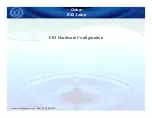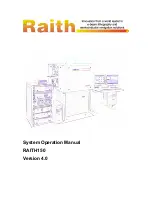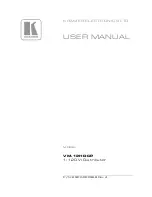
WINDROWER OPERATION
Form 169017 / 169087 / 169095
53
Revision C
6.3 WINDROWER
OPERATION
6.3.1 OPERATIONAL
SAFETY
Follow these safety precautions:
CAUTION
•
Wear close fitting clothing and protective
shoes with slip resistant soles.
•
Remove foreign objects from the machine
and surrounding area.
•
As well, carry with you any protective
clothing and personal safety devices that
COULD be necessary through the day.
Don't take chances.
•
You may need:
o
a
hard hat
o
protective glasses or goggles
o
heavy gloves
o
respirator or filter mask
o
wet weather gear
•
Protect against noise. Wear a
suitable hearing protective
device such as ear muffs or ear
plugs to protect against
objectionable or uncomfortable
loud noises.
•
Follow all safety and operational
instructions given in your Operator's
Manuals. If you do not have a windrower
and/or combine manual, get one from your
dealer and read it thoroughly.
•
Never attempt to start the engine or
operate the machine except from the
Operator’s seat.
•
Check the operation of all controls in a
safe clear area before starting work.
•
Check for excessive vibration and unusual
noises. If there is any indication of trouble,
shutdown and inspect the machine.
Follow proper shutdown procedure. Refer
to Section 6.3.5.4 Shutdown Procedure.
•
Operate only in daylight or good artificial
light.
6.3.2 BREAK-IN
PERIOD
The Windrower is ready for normal operation.
However there are several items to check and
watch out for during the first 150 hours. In
addition to the following, perform the items
specified in to Section 7.14.1
Break-In Inspection
Requirements.
DANGER
Before investigating an unusual sound or
attempting to correct a problem, place GSL in
N-DETENT, shut off engine, and remove key.
IMPORTANT
Until you become familiar with the sound
and feel of your new windrower, be extra
alert and attentive.
a. Operate engine at moderate load and avoid
extremely heavy or light loading for longer than 5
minutes.
b. Avoid unnecessary idling. If engine will be idling
for longer than 5 minutes after reaching operating
temperature, turn key OFF to stop engine.
c. Check engine oil level frequently. Watch for any
signs of leakage. If oil must be added, refer to
Section 7.8.3 or 7.9.2
Oil Level
.
NOTE
During the break-in period, a higher than
usual oil consumption should be considered
normal.
NOTE
If windrower must be driven in cold weather
(below freezing), let engine idle for 3
minutes, and then operate at moderate
speed until oil has warmed up.
d. Watch coolant gauge in cab for temperature rising
beyond normal operating range. Check that
coolant level at reserve tank (mounted next to
radiator) stays between HOT and COLD marks on
tank. Refer to Section 7.8.7.1 or 7.9.7.1 Coolant
Level and Concentration. If over-heating problems
occur, check for coolant leaks.
















































